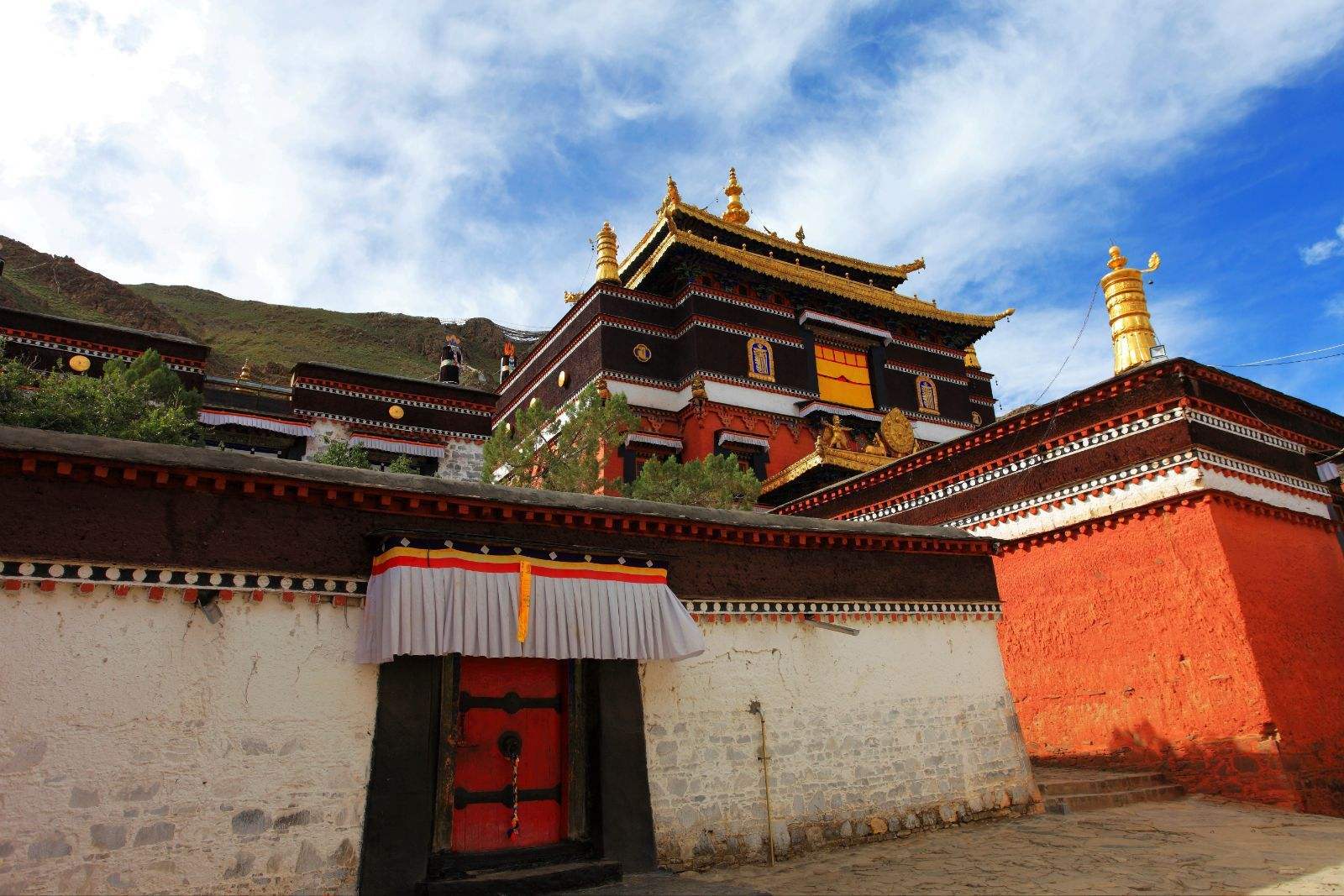Chinese Name: 扎什伦布寺 Pronunciation: zhā shén lún bù sì
Occupied Area: 150000 square meters
Building Time: AD 1447
Best Visiting Time: June to August
Admission Ticket Fare: 100 yuan
Opening Hours: 9:00-17:00
Suggested Visiting Hours: 2 Hours
Address: Located at the foot of the Nizeri Mountain in Xigaze, Tibet
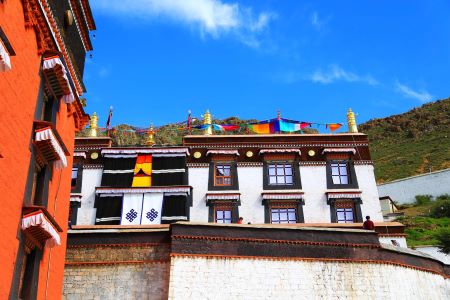
Tashilhunpo Monastery is the Grupo Monastery of Tibetan Buddhism in China. It is located at the foot of the Nizeri Mountain in Xigaze, Tibet. It is the largest temple in this region.
In AD1447, the disciple of Zongkaba, Gedun Juba built it. Together with the “three major temples” Ganden, Sera, and Drepung Monastery in Lhasa, they are collectively called the “Four Great Temples” of the Gelug Sect of Tibetan Buddhism. The four major monasteries as well as the Taer Monastery in Qinghai and Labrang Monastery in Gansu are listed as the “Six Major Temples” of the Gelug Sect. Tashilhunpo Monastery is one of the Six Shamanism Monasteries in China.
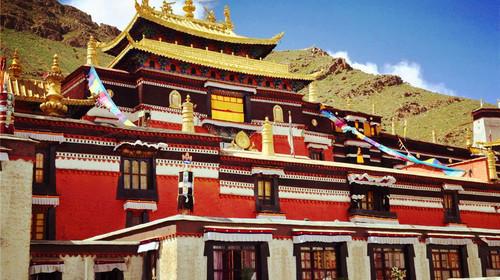
The founder of the Tashilhunpo Monastery can be traced back to the first Dalai Lama, Gedun Juba( Lord Gedun,1391-1474).
In AD1447(the twelfth year of the Ming Dynasty), to commemorate the past teacher, he hired Tibetan and Nepalese craftsmen to make a 5-meter-high golden bronze statue of Sakyamuni.
After the completion of the statue, Gedun Juba built the Tashilhunpo Monastery to enshrine the Buddha with the financial support of the great nobles of Tibet, Quxiong Langpa. At first, the temple was named “Gang Jian Pei”, which meant Xueyu Xingfo Temple. The construction of the temple started in September of the Tibetan calendar in 1447, and one year later, the first building of Sakyamuni Hall was completed.
By 1459, Tashilhunpo Monastery began to take shape, with 5 large and small Buddhist halls, 12 Buddha statues and nearly 200 monks.
In 1601, the fourth Panchen Lama Losang Qujie Gyatzan(1570-1662) was appointed as the 16th Chiba(abbot) of Tashilhunpo Monastery. At this time, on one hand, he reorganized the temple style; on the other hand, he went to various places to give lectures, raise funds and expand the temple.
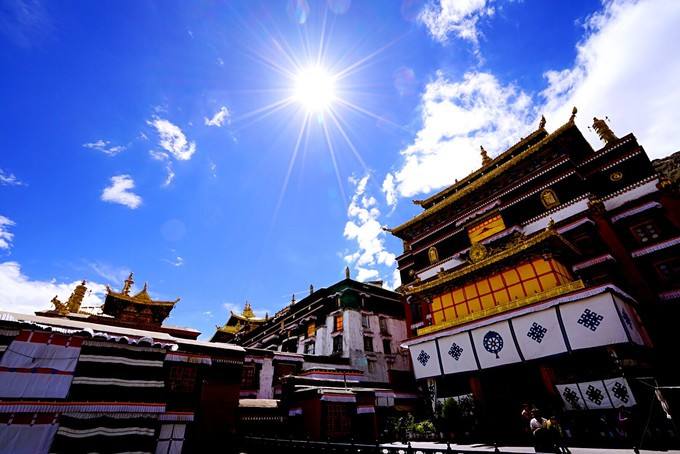
During the 60 years of his management, in addition to the reconstruction and expansion of the old halls, more than 10 large and small halls were built. What’s more, he personally collected copper, iron and gold leaf from Lhasa and other places to build two golden tile temples.
In 1607, Luosang Qujie created Abazacang specializing in Tantra and established a complete learning system from manifest to Tantric in the temple.
In 1984, the state allocated funds for reconstruction. Under the auspices of the 10th Panchen Lama, Chokichi Gyatzan, the funeral pagoda and hall of worship of the 5th to 9th Panchen Lama was completed in four years and was named Panchen Tomb Tashi Nanjie( meaning auspicious victory).
Qiangba Buddha Hall
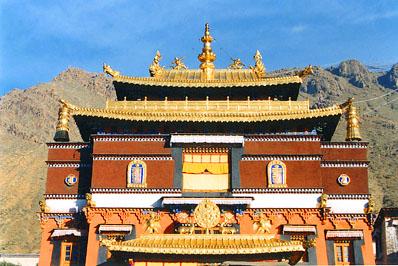
On the west side of Tashilhunpo Monastery, there is a grand hall, Qiangba Buddha Hall, which is also called Qiangba Kang in Tibetan. There is a large bronze Buddha statue of Qiangba inside and it gets a lot of attention from visitors.
The main hall was built in 1914 and was presided over by the 9th Panchen Lama. The hall is a five-story hall with two corridors below. The hall is 30 meters high and has a construction area of 862 square meters. The buildings are all built of stone, with dense seams and solemnity.
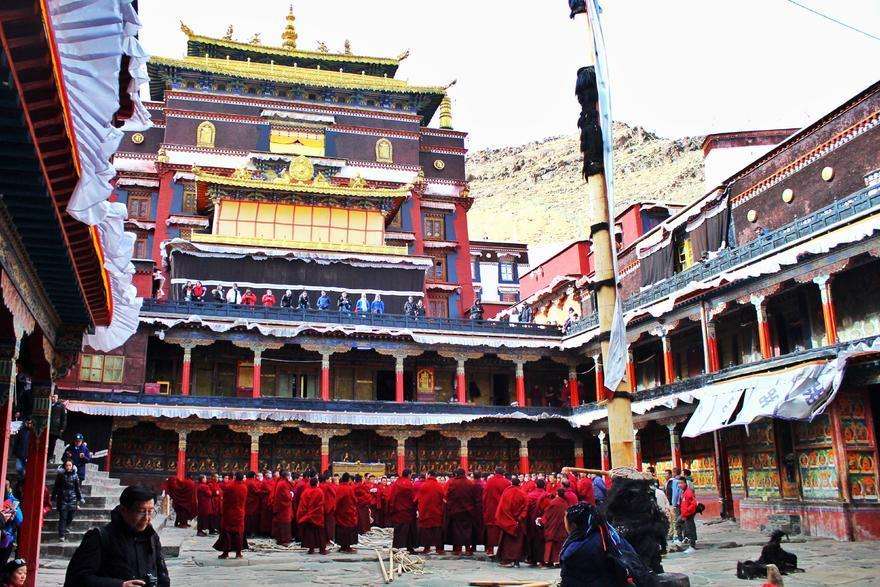
Main Assembly Hall is the earliest building of the temple. There is a 500-square-meter lecture hall in front of the temple, which is a place where the Panchen Lama gave lectures and debates to all monks in the temple.
The hall can accommodate more than 2000 people chanting at the same time. In addition to Buddha Shakyamuni and his major disciples, the statues enshrined on both sides of the pillars are also carved with standing statues of the founder of the temple and the 4th Panchen Lama.
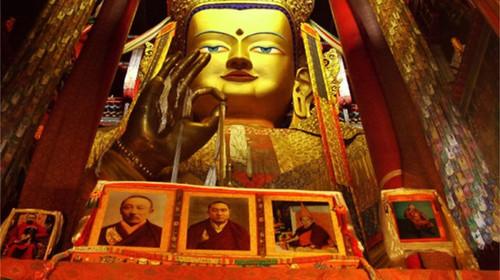
Jia Na Lakang, which means “Han Buddhist Hall”, is a Buddhist temple not seen frequently in other monasteries in Tibet. The Buddhist hall contains many gifts such as Yongle ancient porcelain, gold and silver wine cups, tea bowls and dishes, jade utensils, textiles given to the Panchen Lama by the emperors of the past dynasties.
The earliest nine bronze Buddha statues from the Tang Dynasty were said to have been brought into Tibet by Princess Wencheng. Later, there is a bronze statue of a naked female Tara riding on a wild boar from the Yuan Dynasty and a gold seal engraved with the Han, Mongolian, and Tibetan characters given to the Panchen Lama by the emperor of the Qing Dynasty.
It is located on the west side of the temple. The hall is 30 meters high and enshrines the seated Maitreya statue built by the Ninth Panchen Lama Choekyi Nyima in 1914.
